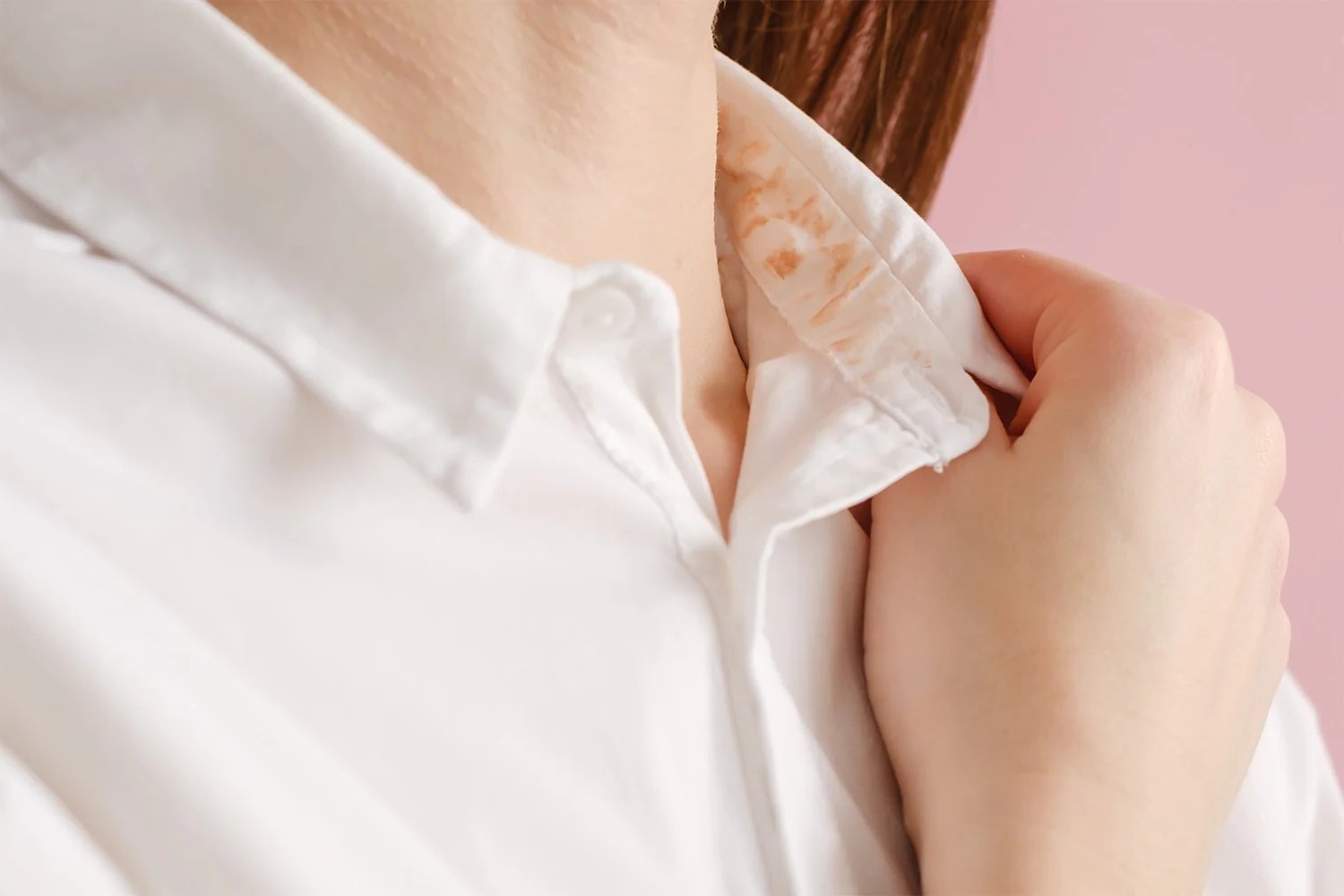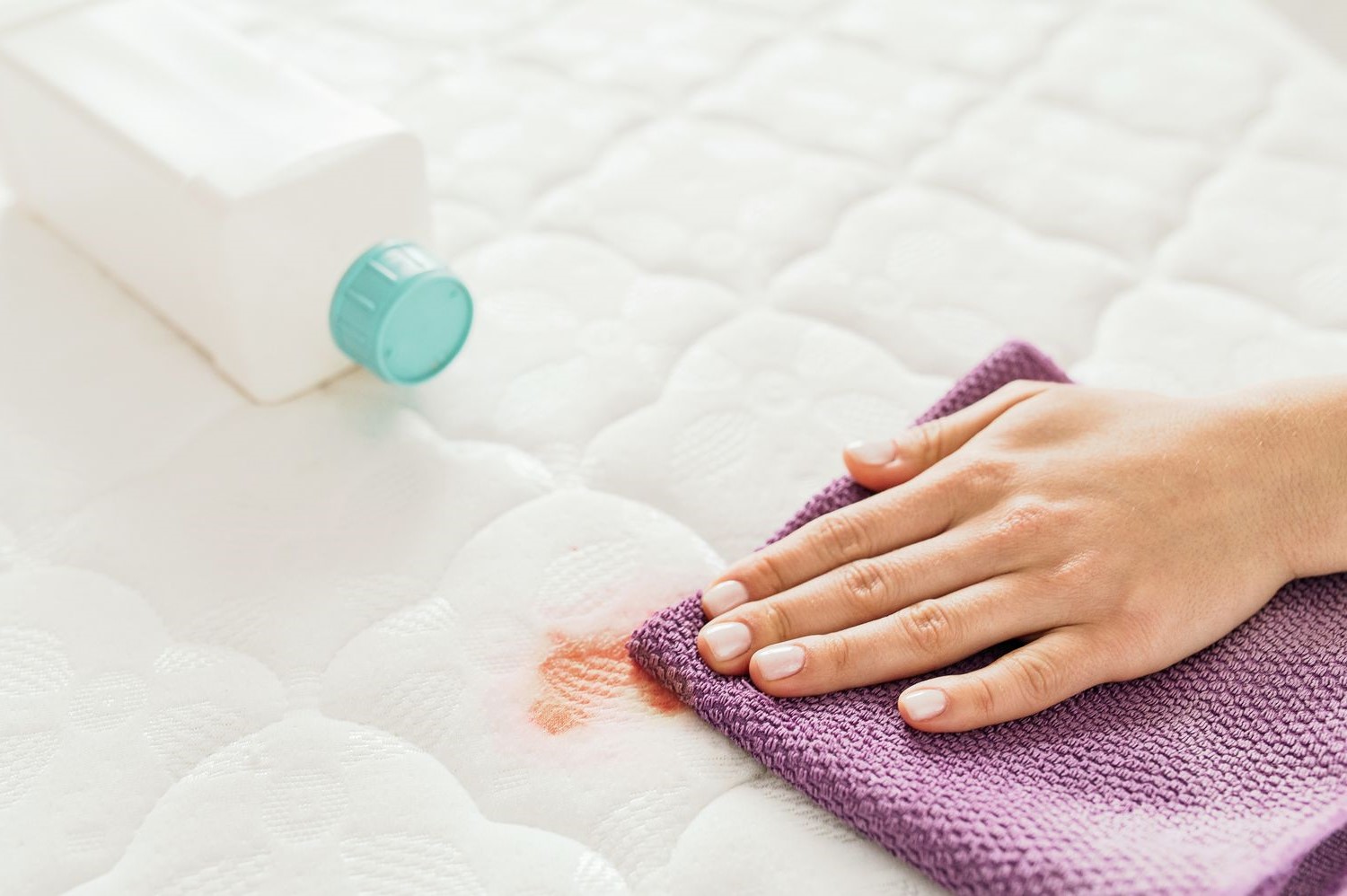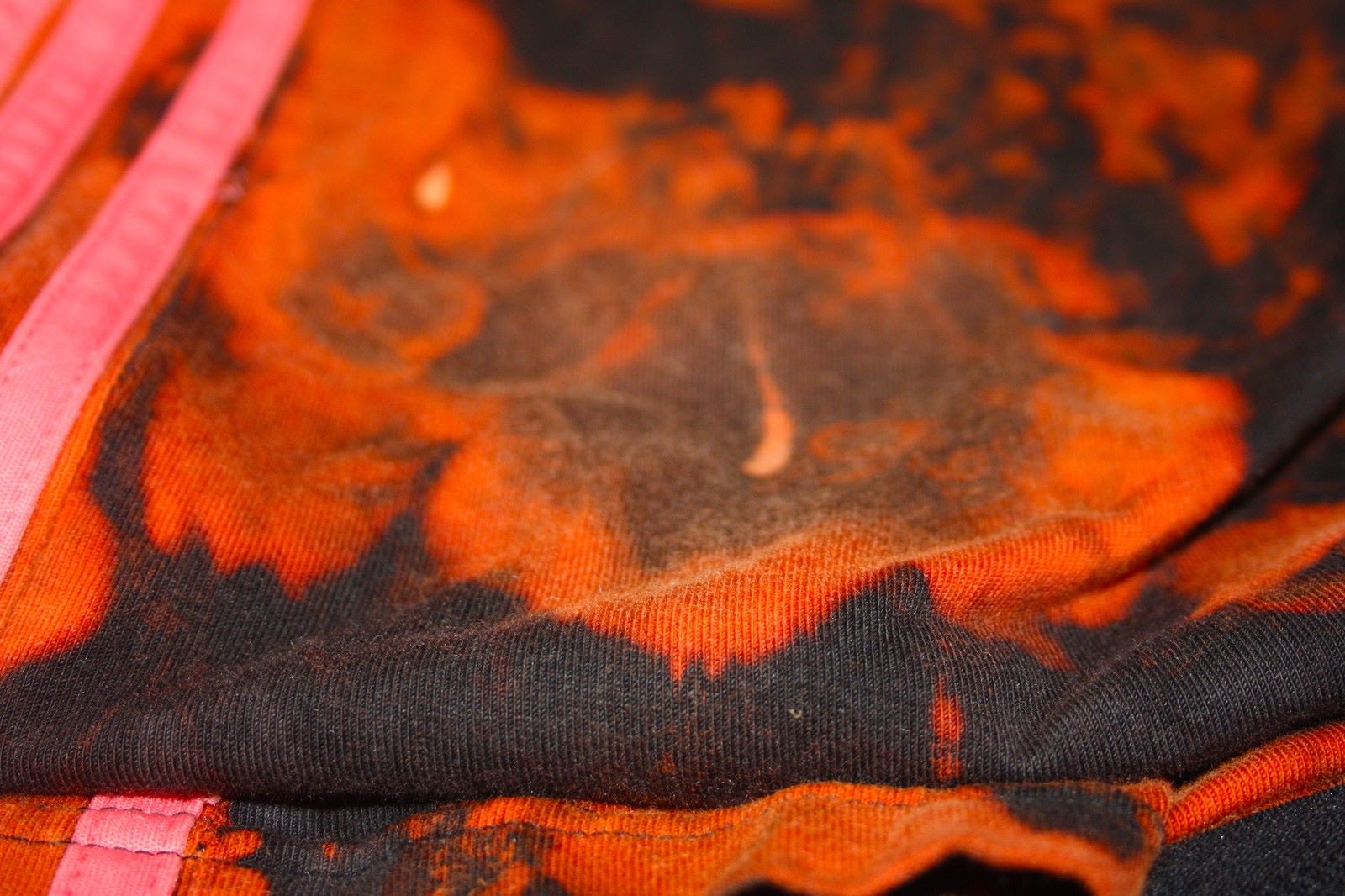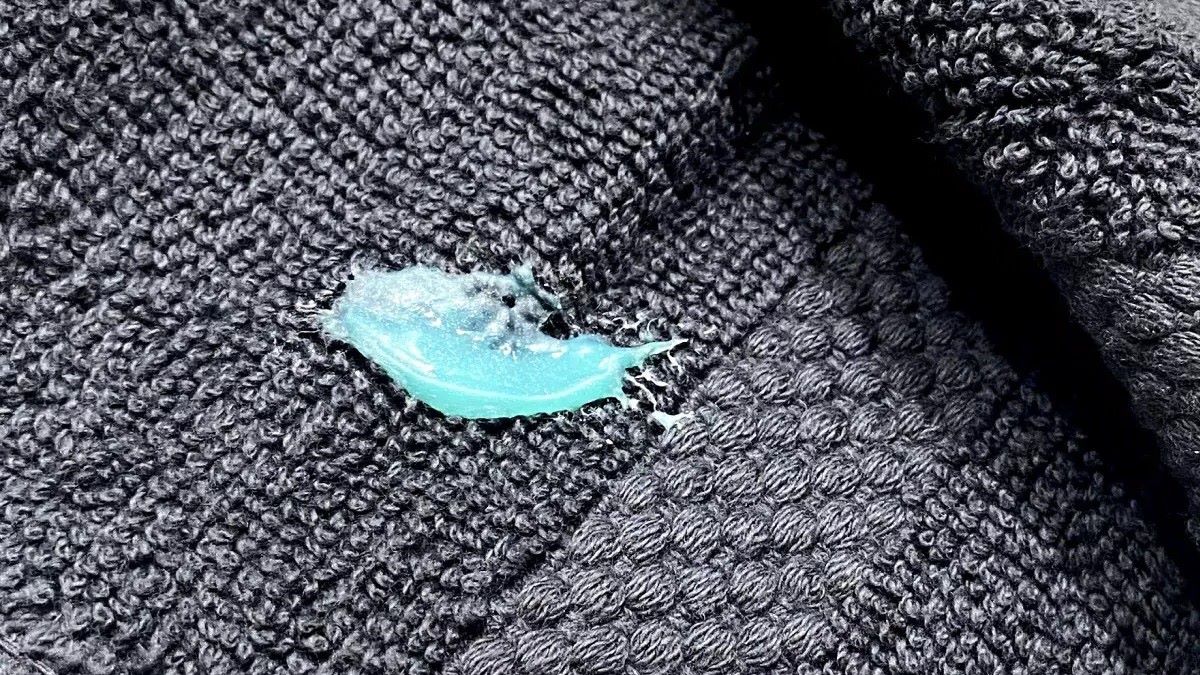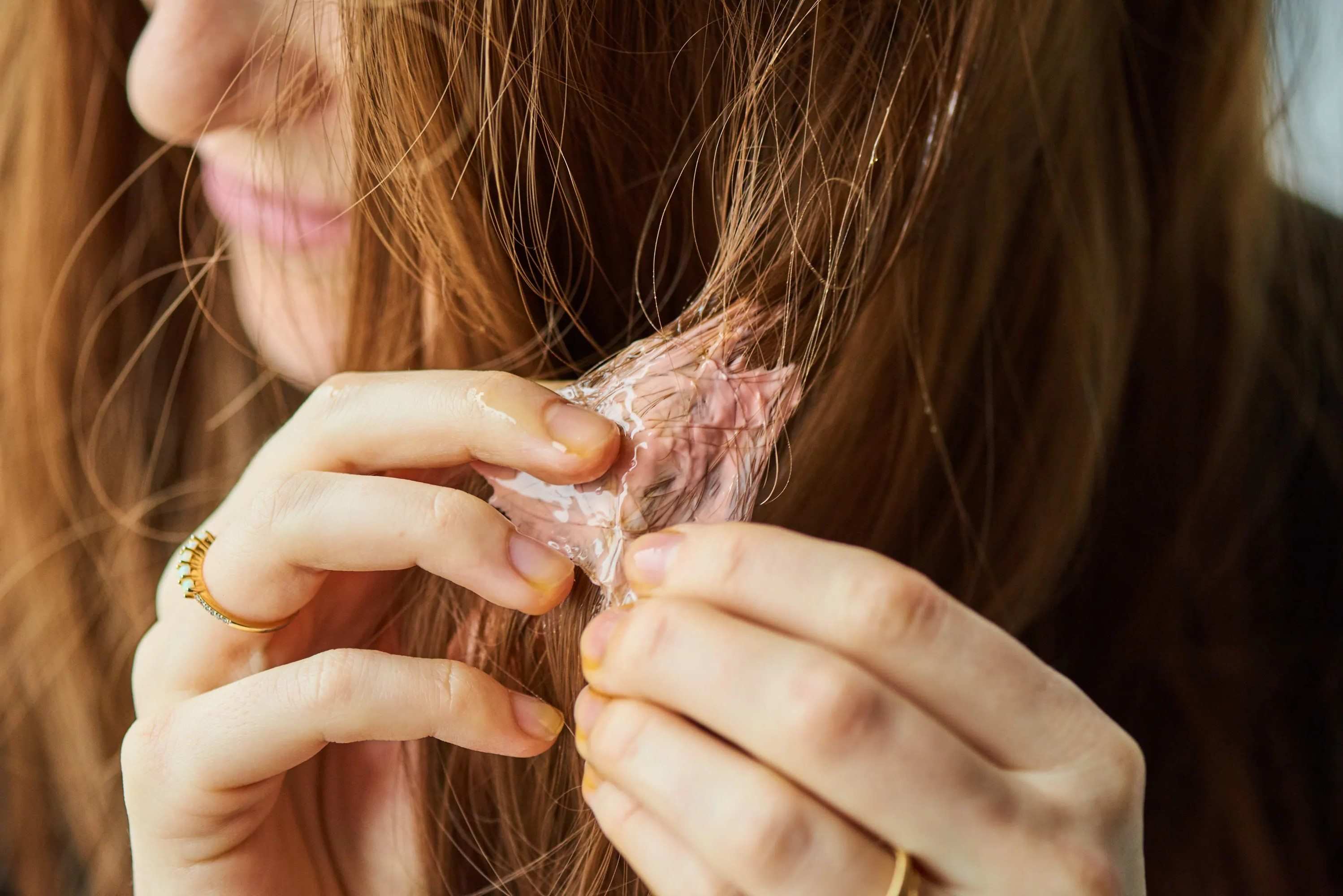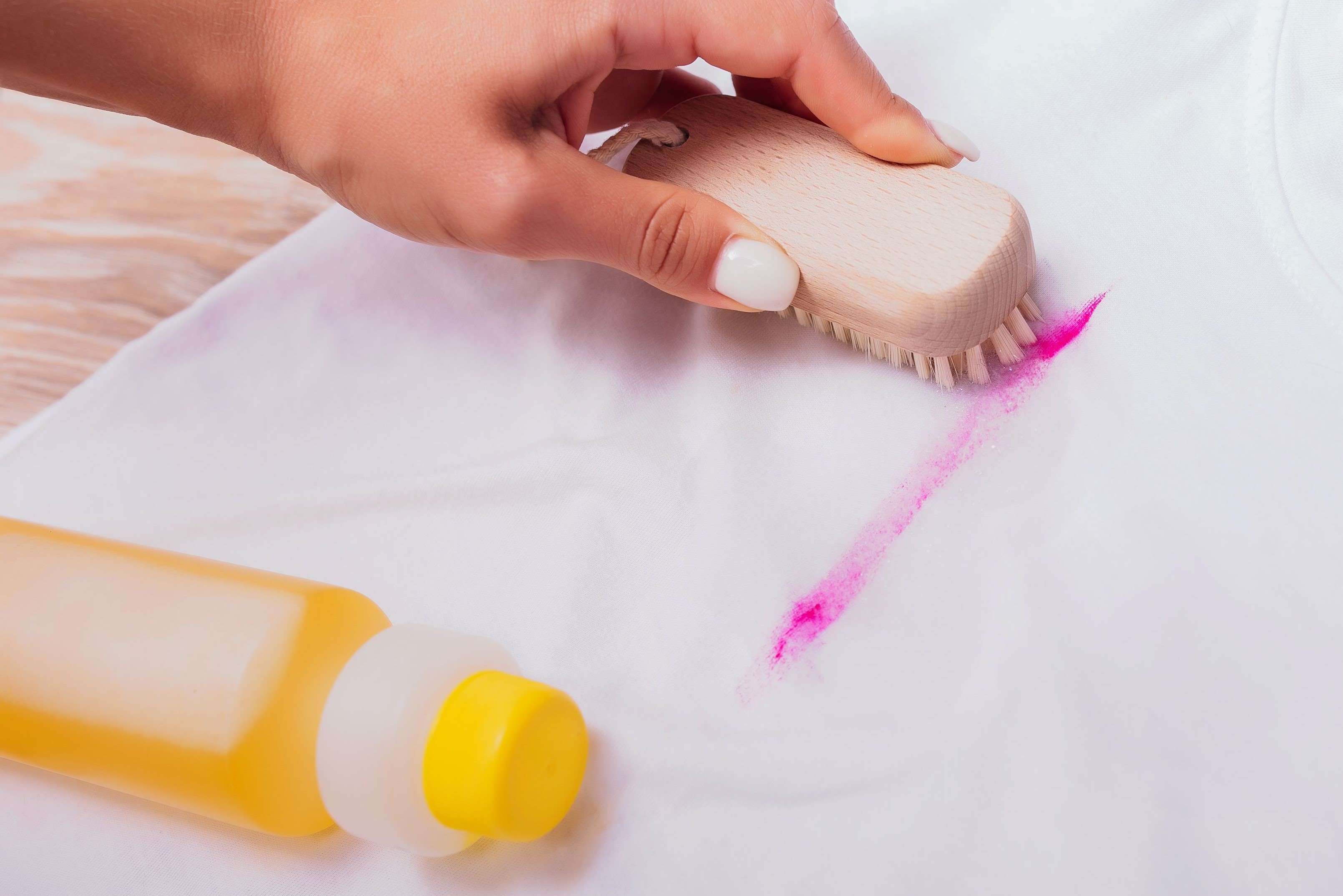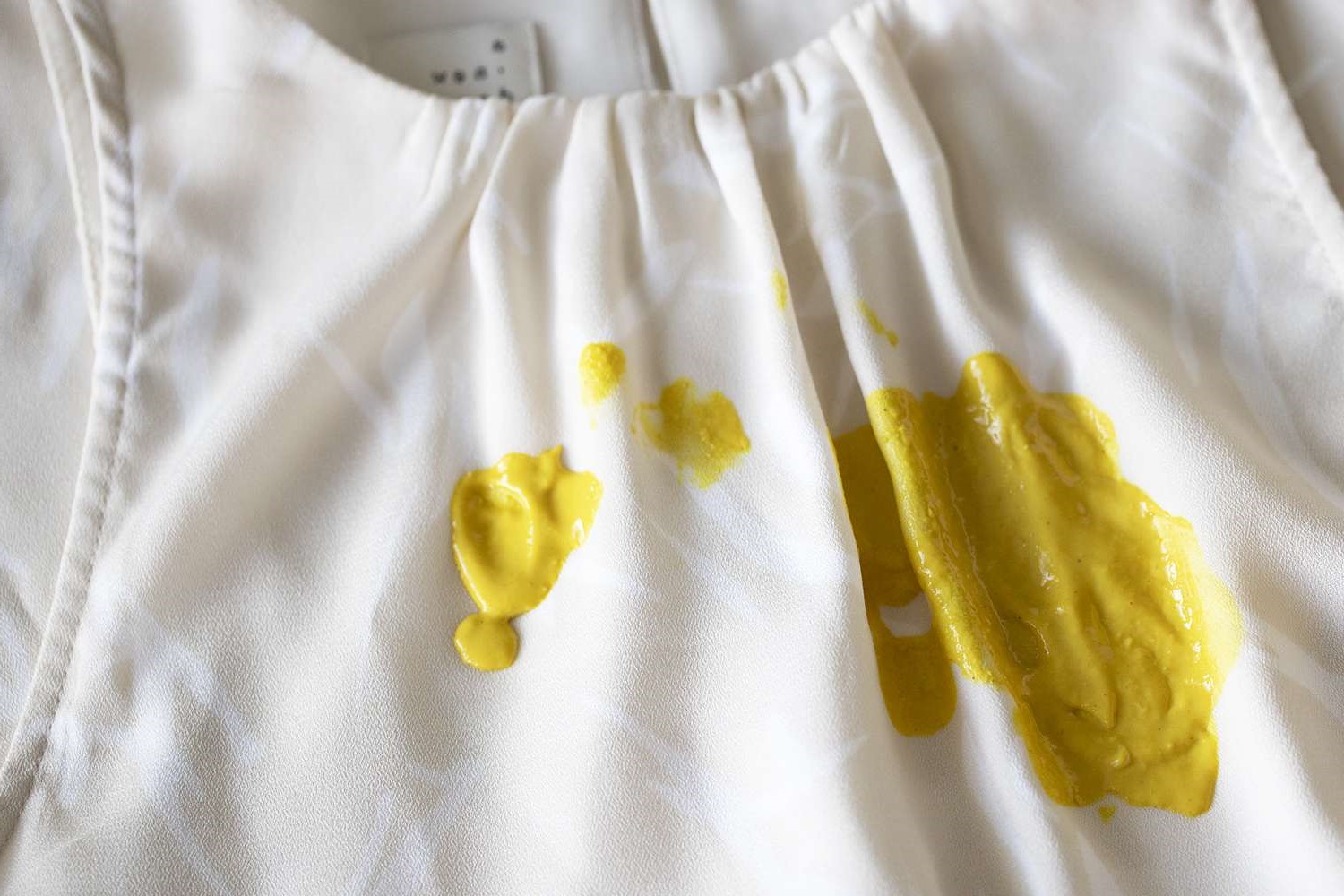Home>Home and Garden>How To Get Stain Out Of Polyester
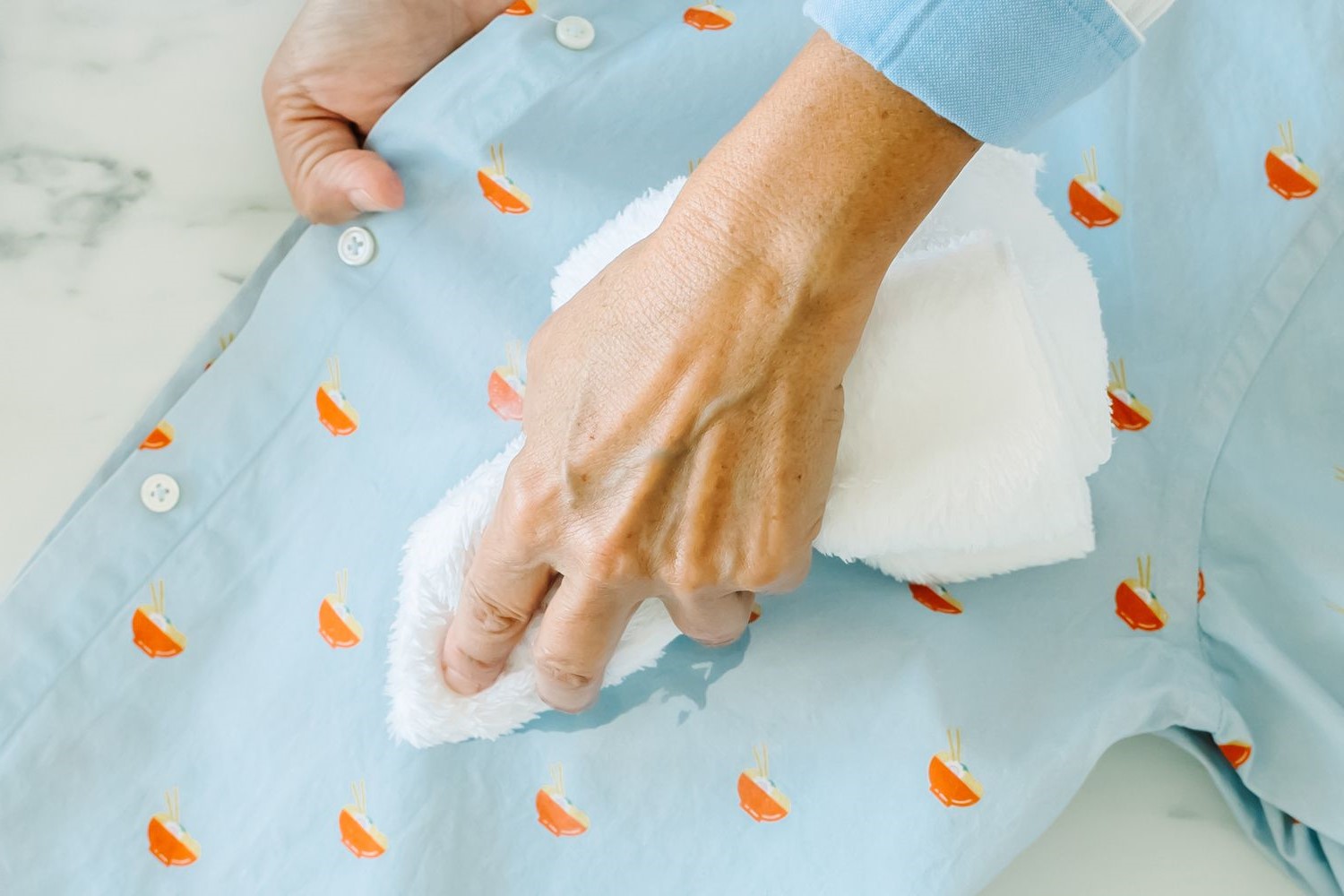

Home and Garden
How To Get Stain Out Of Polyester
Published: February 27, 2024
Learn effective methods for removing stains from polyester fabric in your home and garden. Discover easy tips and tricks for keeping your polyester items looking fresh and clean.
(Many of the links in this article redirect to a specific reviewed product. Your purchase of these products through affiliate links helps to generate commission for Noodls.com, at no extra cost. Learn more)
Table of Contents
Introduction
Polyester is a versatile and durable fabric that is commonly used in clothing, upholstery, and linens. Its popularity stems from its resistance to wrinkles, shrinking, and fading, making it a practical choice for everyday use. However, one common challenge that polyester fabric owners face is dealing with stains. Whether it's a spill on a favorite polyester shirt or a stubborn mark on a polyester sofa, knowing how to effectively remove stains from this fabric is essential.
In this comprehensive guide, we will delve into the world of polyester fabric and explore the best methods for removing various types of stains. From understanding the unique properties of polyester to learning how to pre-treat and wash stained polyester items, we will cover everything you need to know to keep your polyester fabric looking fresh and clean. Additionally, we will provide insights into removing stubborn stains that may seem impossible to tackle, ensuring that you are well-equipped to handle any staining mishaps that come your way.
By the end of this article, you will have a thorough understanding of how to care for and maintain polyester fabric, allowing you to confidently tackle stains and preserve the beauty and longevity of your polyester items. So, let's embark on this stain-fighting journey and equip ourselves with the knowledge and techniques needed to conquer stains on polyester fabric.
Read more: How To Get Detergent Stains Out Of Clothes
Understanding Polyester Fabric
Polyester is a synthetic fiber that is known for its exceptional durability, versatility, and resistance to wrinkles and shrinking. It is a popular choice for a wide range of products, including clothing, bedding, curtains, and upholstery. Polyester fabric is made from petroleum-based products through a process called polymerization, which involves combining various chemical compounds to create long chains of fibers. These fibers are then woven or knitted to produce the fabric.
One of the key characteristics of polyester fabric is its ability to repel water-based stains, making it relatively easy to clean. Unlike natural fibers such as cotton or wool, polyester is hydrophobic, meaning it does not readily absorb liquids. This property makes it less prone to staining from common spills like coffee, juice, or wine. Additionally, polyester is resistant to mildew and mold, making it an ideal choice for outdoor furniture and other items exposed to moisture.
Furthermore, polyester fabric is known for its color retention properties. It holds dye well, resulting in vibrant and long-lasting colors that resist fading, even after multiple washes. This makes polyester an excellent choice for vibrant and patterned clothing and home decor items.
Despite its many advantages, polyester fabric does have some limitations. It is susceptible to oil-based stains, such as grease and makeup, which can adhere to the fabric and be challenging to remove. Additionally, high heat can damage polyester fabric, causing it to melt or shrink, so it is important to follow specific care instructions when washing and drying polyester items.
Understanding the unique properties of polyester fabric is essential for effectively treating and removing stains. By recognizing its strengths and weaknesses, you can implement targeted stain removal techniques that preserve the integrity of the fabric while effectively eliminating stains. With this knowledge in hand, you are well-prepared to tackle the next section, which delves into the common types of stains that may affect polyester fabric.
Common Types of Stains on Polyester
Polyester fabric, while resistant to many types of stains, can still fall victim to various common culprits. Understanding the nature of these stains is crucial for effective removal. Here are some of the most prevalent types of stains that may affect polyester fabric:
-
Oil-Based Stains: Polyester fabric is prone to absorbing oil-based substances such as grease, cooking oil, and makeup. These stains can be particularly stubborn and may require specialized treatment to fully remove.
-
Food and Beverage Stains: Spills from food and beverages, including coffee, tea, wine, and sauces, can leave noticeable marks on polyester fabric. While polyester's water-repellent nature provides some protection, these stains can still occur, especially if not promptly addressed.
-
Ink Stains: Accidental ink marks from pens or markers can pose a significant challenge when they come into contact with polyester fabric. The pigments in ink can adhere firmly to the fibers, making removal a delicate process.
-
Dirt and Mud Stains: Polyester items used in outdoor settings or high-traffic areas are susceptible to dirt and mud stains. These can detract from the fabric's appearance and require thorough cleaning to restore the original look.
-
Sweat and Body Oils: Clothing items made from polyester, such as activewear and undergarments, can accumulate sweat and body oils, leading to discoloration and odor. Proper stain removal techniques are essential to maintain the fabric's integrity.
-
Pet Stains: Polyester upholstery and bedding may be exposed to pet-related stains, including urine, saliva, and dirt. These stains require prompt attention to prevent lasting damage to the fabric.
Understanding the specific nature of these stains is crucial for determining the most effective treatment methods. In the following sections, we will explore pre-treating stains and washing polyester fabric, providing tailored strategies for addressing each type of stain. By equipping yourself with the knowledge of how to combat these common stains, you can ensure that your polyester items remain in pristine condition, free from the blemishes that can detract from their beauty and functionality.
Pre-Treating Stains
Pre-treating stains on polyester fabric is a crucial first step in the stain removal process. By addressing stains promptly and employing targeted pre-treatment techniques, you can effectively loosen and lift the stain before proceeding with the washing or cleaning process. Here's a detailed look at the pre-treatment methods for common types of stains on polyester:
Oil-Based Stains
For oil-based stains such as grease or makeup, start by blotting the stained area with a clean cloth or paper towel to absorb as much of the oil as possible. Avoid rubbing the stain, as this can spread the oil and embed it further into the fabric. Once excess oil is removed, apply a small amount of dishwashing liquid or a pre-treatment stain remover directly to the stained area. Gently work the product into the fabric using a soft-bristled brush or your fingertips. Allow the pre-treatment to sit for 10-15 minutes to penetrate the stain before proceeding to the washing phase.
Read more: How To Get Stains Out Of Car Seats
Food and Beverage Stains
When dealing with food and beverage stains, begin by rinsing the stained area with cold water to dilute and remove as much of the spilled substance as possible. Avoid using hot water, as it can set the stain into the fabric. After rinsing, apply a stain remover or a mixture of water and white vinegar to the affected area. Gently dab and work the solution into the stain, allowing it to sit for several minutes before laundering the item.
Ink Stains
Ink stains require delicate pre-treatment to avoid spreading the pigment further into the fabric. Place a clean cloth or paper towel underneath the stained area to prevent the ink from transferring to other parts of the fabric. Apply a small amount of rubbing alcohol or specialized ink stain remover to the stain, carefully blotting and dabbing to lift the ink. Avoid excessive rubbing, as this can cause the ink to spread. Once the stain is treated, proceed with washing the item according to the care instructions.
Dirt and Mud Stains
For dirt and mud stains, allow the affected area to dry completely before attempting pre-treatment. Once dry, gently brush off any loose dirt or mud using a soft-bristled brush. Then, apply a mixture of water and mild detergent to the stain, gently working it into the fabric. Allow the pre-treatment to sit for a brief period before laundering the item as usual.
Sweat and Body Oils
To pre-treat sweat and body oil stains, apply a small amount of enzyme-based laundry detergent or a specialized stain remover to the affected area. Enzyme-based products are effective in breaking down organic stains, such as sweat and body oils, before washing. Gently massage the pre-treatment into the fabric and allow it to sit for 10-15 minutes before washing.
Read more: How To Get A Red Stain Out Of Carpet
Pet Stains
When dealing with pet-related stains, such as urine or saliva, begin by blotting the stained area with paper towels to absorb excess moisture. Then, apply a pet stain remover or a mixture of water and white vinegar to the stain, gently working it into the fabric. Allow the pre-treatment to sit for a sufficient duration before laundering the item.
By employing these targeted pre-treatment methods, you can effectively address a wide range of stains on polyester fabric, setting the stage for successful stain removal during the washing phase. Each pre-treatment technique is tailored to the specific nature of the stain, ensuring that you can effectively combat stains and restore the pristine appearance of your polyester items.
Washing Polyester Fabric
Washing polyester fabric requires a gentle yet thorough approach to ensure that stains are effectively removed without compromising the fabric's integrity. Here's a detailed guide on the best practices for washing polyester items:
Machine Washing
When machine washing polyester clothing or linens, it is essential to use a mild detergent and select a gentle or delicate cycle. Avoid using harsh detergents or fabric softeners, as they can leave residue on the fabric and diminish its water-repellent properties. Additionally, wash polyester items with similar colors to prevent potential color bleeding or transfer.
Water Temperature
Opt for a cool or lukewarm water temperature when washing polyester fabric. High heat can damage the fabric and cause it to shrink or lose its shape. Cold water is particularly effective for removing sweat and body oil stains, as it helps prevent these substances from setting into the fabric.
Read more: How To Get Knot Out Of Necklace
Gentle Handling
Handle polyester items with care during the washing process. Avoid overloading the washing machine to allow the items to move freely and prevent excessive wrinkling. Additionally, refrain from wringing or twisting the fabric, as this can cause stretching and distortion.
Drying
When it comes to drying polyester fabric, air drying is the preferred method. Lay the items flat on a clean, dry towel or a drying rack to air dry. Avoid hanging polyester items directly in sunlight, as prolonged exposure to UV rays can cause fading. If using a dryer, select a low heat setting and promptly remove the items once dry to prevent wrinkles.
Ironing
Polyester fabric is prone to heat damage, so it is crucial to use a low heat setting when ironing. If necessary, iron polyester items on the lowest heat setting recommended for synthetic fabrics. To prevent shine or scorching, place a clean cloth between the iron and the fabric when pressing.
By following these washing guidelines, you can effectively clean and maintain polyester fabric, ensuring that stains are removed without compromising the fabric's quality. With proper care and attention, your polyester items can remain in excellent condition, free from stains and looking as good as new.
Removing Stubborn Stains
Despite taking preventive measures and employing pre-treatment methods, some stains may prove to be particularly stubborn and resistant to conventional stain removal techniques. When faced with such challenging stains on polyester fabric, it becomes necessary to explore specialized approaches to effectively eliminate them.
Read more: How To Remove Bleach Stains
Vinegar and Baking Soda Solution
A powerful and natural remedy for stubborn stains involves creating a paste using white vinegar and baking soda. This versatile solution can be applied directly to the stained area, allowing it to work its magic in breaking down and lifting the stubborn stain. After applying the paste, allow it to sit for a period before gently scrubbing the area with a soft-bristled brush. Following this, launder the item as usual to reveal the results of this potent stain-fighting method.
Oxygen-Based Stain Removers
Oxygen-based stain removers, available in various commercial products, are highly effective in targeting and removing stubborn stains from polyester fabric. These products harness the power of oxygen to break down and lift the stain without causing damage to the fabric. By following the manufacturer's instructions, you can apply these specialized stain removers to the affected area, allowing them to penetrate and dissolve the stubborn stain before washing the item.
Professional Dry Cleaning
In cases where traditional stain removal methods have proven ineffective, seeking professional dry cleaning services may be the optimal solution. Professional dry cleaners possess the expertise and specialized cleaning agents necessary to tackle even the most challenging stains on polyester fabric. By entrusting your stained polyester items to experienced professionals, you can benefit from their advanced techniques and equipment, ensuring that stubborn stains are effectively eradicated without compromising the fabric's integrity.
Patience and Persistence
When dealing with stubborn stains, it is essential to approach the removal process with patience and persistence. Some stains may require repeated treatments and gentle yet persistent efforts to achieve the desired results. By consistently applying targeted stain removal methods and allowing sufficient time for the treatments to work, you can gradually diminish and ultimately eliminate even the most stubborn stains from polyester fabric.
By incorporating these specialized approaches and maintaining a determined attitude, you can effectively conquer stubborn stains on polyester fabric, restoring the pristine appearance of your cherished items. With the right techniques and a commitment to stain removal, you can ensure that your polyester fabric remains free from persistent blemishes, allowing its inherent beauty and durability to shine through.
Read more: How To Get Slime Out Of Carpet
Conclusion
In conclusion, mastering the art of stain removal from polyester fabric is a valuable skill that empowers individuals to preserve the beauty and longevity of their cherished items. By understanding the unique properties of polyester fabric and the specific nature of common stains, individuals can implement targeted pre-treatment and washing techniques to effectively combat stains and maintain the fabric's pristine appearance.
The journey of stain removal from polyester fabric begins with a deep understanding of the fabric's characteristics. Polyester's resistance to water-based stains, color retention properties, and susceptibility to oil-based stains and high heat guide the approach to stain removal. By recognizing these attributes, individuals can tailor their stain removal strategies to address the specific challenges posed by different types of stains.
Pre-treating stains is a crucial initial step in the stain removal process. Whether dealing with oil-based stains, food and beverage stains, ink stains, dirt and mud stains, sweat and body oils, or pet-related stains, targeted pre-treatment methods set the stage for successful stain removal during the washing phase. By employing specialized pre-treatment techniques, individuals can effectively loosen and lift stains, preparing the fabric for thorough cleaning.
When it comes to washing polyester fabric, a gentle yet thorough approach is essential. Machine washing with mild detergent, selecting appropriate water temperatures, gentle handling, and proper drying and ironing techniques are key elements in maintaining the fabric's integrity while effectively removing stains. By adhering to these best practices, individuals can ensure that their polyester items remain in excellent condition, free from blemishes.
For stubborn stains that resist conventional removal methods, specialized approaches such as vinegar and baking soda solutions, oxygen-based stain removers, and professional dry cleaning services offer effective solutions. Patience and persistence are essential when tackling stubborn stains, as consistent efforts and targeted treatments can gradually diminish and ultimately eliminate even the most challenging blemishes.
In essence, mastering the art of stain removal from polyester fabric is a blend of science, art, and perseverance. By equipping oneself with the knowledge and techniques presented in this guide, individuals can confidently tackle stains on polyester fabric, ensuring that their items remain fresh, clean, and free from persistent blemishes. With a commitment to proper care and maintenance, polyester fabric can continue to adorn our lives with its vibrant colors, durability, and timeless appeal.

